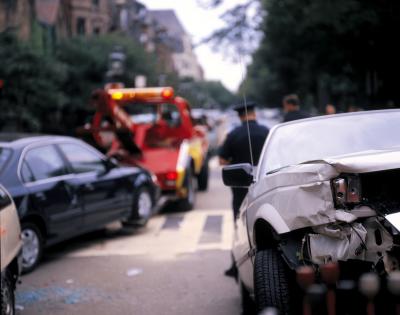It seems that car damage of some sort is inevitable for us all. Whether it is those annoying parking lot dings and dents, our opening doors against other objects or more severe collision damage, correctly estimating that damage is necessary if we are to get a fair repair cost. Learning to do this should be a part of car ownership, since auto body repair shops have been caught more than once taking advantage of uninformed drivers and insurance companies. Knowing what needs to be repaired, what does not and how much it should cost, can save money in the long run.

Calm down, if you have just been hit or involved in an accident. Let the anger, aggravation or fear subside. Use a camera or the one from your cell phone and take several pictures from different angles as quickly as you can. Take the pictures in adequate but not too bright light. Make sure you capture the full extent of the damage.

Date and time the photos of the serious damage, if your camera does not do it automatically. Go back to the car, after securing your camera, with pad and pencil in hand. Inspect the entire car exterior carefully. Open and shut every door two or three times, if still possible as you normally would, checking for any malfunctions.

Do the same with the trunk and hood. Check the entire car, no matter where the point of impact was, since severe impacts can warp and break or damage other parts not directly struck by the impact. Open and close the trunk and hood several times, checking the latches to make sure they are okay.

Check the tires and wheels for damage. Note any tires which do not appear to sit straight and look normal. Pay particular attention to any tire missing a wheel cover or other obvious visual damage. Write down any missing or damaged exterior trim as well.

Inspect the car’s interior for damage next. Look for any missing or broken knobs and handles. Test the functionality of the car’s accessories and all interior door locks and latches. Sit in the driver’s seat, start the vehicle and listen for any unusual noises.

Allow the car to run for a minute or two, then, absent any unusual noises, take it for a slow, short test drive. Put it in reverse first to check transmission functionality; stop and put it in drive and drive slowly forward. Listen for any unusual noises and pay special attention to how the car handles. Drive slowly and check the steering and braking for normalcy.
Use your photos, visual inspection and notes as references to call the local car dealership, parts stores and salvage yards for the part cost and labor cost for each exterior body part which needs replacing. Call a car frame shop, if you have received a severe blow to the side or corner of the vehicle. Let them determine if the frame is warped before paying to repair what would possibly be classified as a “totaled” vehicle if the frame were warped badly.